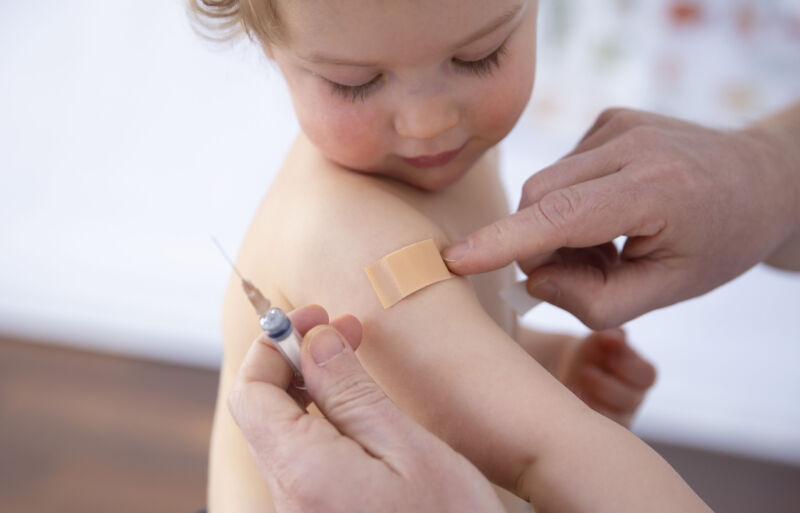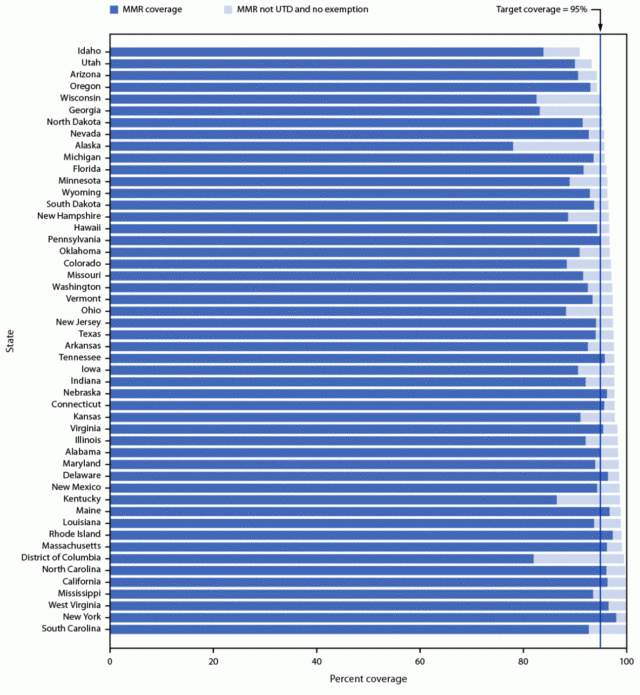
Routine childhood vaccination coverage continues to slip among US kindergarteners, falling from 95 percent—the target coverage—prior to the pandemic to 94 percent in the 2020–2021 school year and to the new low of 93 percent in the 2021–2022 school year, according to a fresh analysis published Thursday by the Centers for Disease Control and Prevention.
While a 2 percent drop “might not sound significant, it means nearly 250,000 kindergarteners are potentially not protected against measles alone,” Georgina Peacock, director of the CDC’s Immunization Services Division, told reporters in a media briefing Thursday. And, she added, national coverage of MMR vaccination—which protects against measles, mumps, and rubella—is now the lowest it has been in over a decade.
Peacock and other health experts in the briefing attributed the continued decline to a variety of factors. Prime among them are pandemic-related disruptions, such as missed well-child doctor’s appointments where routine vaccines are given. There’s also data suggesting barriers to access for children living below the poverty line or in rural areas. And vaccine misinformation and disinformation continue to play a role, as it has for many years prior to the pandemic.
Exemptions

In past years, when officials saw declining vaccination rates driven by anti-vaccine rhetoric, they also saw a corresponding rise in exemptions for school immunization requirements. But CDC officials aren’t seeing that in the current data. Though exemptions rose slightly from last year—by 0.4 percentage points—the main driver of the overall decrease in vaccination coverage was a larger increase in the number of children who are not up to date with their vaccines but who have no exemption status to explain the lack of shots.
Shannon Stokley, deputy director for the CDC’s Immunization Services Division, told reporters that the drop may be due to pandemic-related school policies that offered parents grace periods and other flexibilities for getting their children up to date on their vaccines and their immunization forms filed with the school.
This could mean vaccination coverage may rebound with little effort from the health community as America continues to try to move on from the pandemic. But the CDC officials also acknowledged that rampant anti-vaccine sentiments surrounding the rollout of COVID-19 vaccines may have spilled over into routine childhood vaccination, making a full rebound less likely.
“We have seen some hesitancy in vaccines during the pandemic related mostly, I think, to the COVID vaccine. This could in some cases have translated over to routine vaccinations,” Peacock said. “That’s something that we’re watching very closely,” she added, saying that the primary method for addressing vaccine hesitancy is to point parents to trusted health care providers to discuss concerns about vaccines.
https://arstechnica.com/?p=1909837

